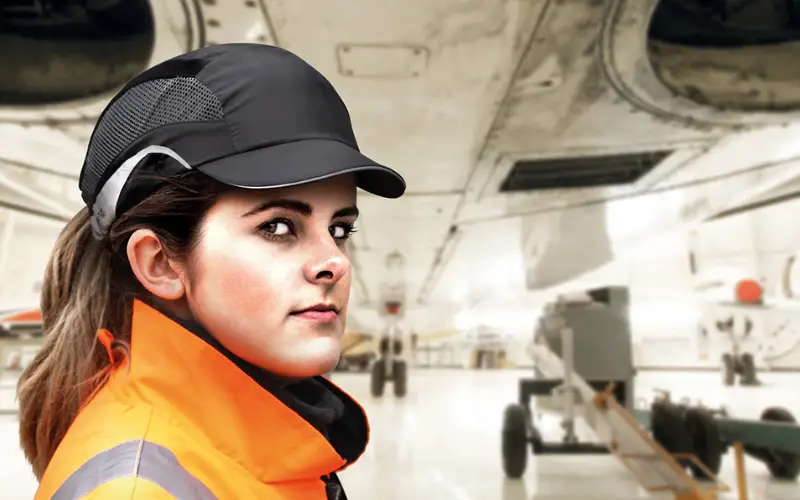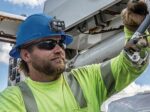Are you working at a construction site? If yes, are you fully equipped to ensure your safety at the workplace?
Head injuries are one of the most common accidents that occur at construction sites. They can be really serious and can ever be life threatening.
Hence it is important to keep your head safe and sound at all times. Safety caps are must at construction sites and if you are a construction worker you must have come across a wide variety of safety caps and hats.
One controversial safety cap out there that might pop up when you go shopping for safety caps would be bump caps. But are bump caps meant for construction workers? If you are wondering whether you can wear bump caps on site, we can help you out.
Bump caps do not provide the level of protection required to make it a good option when it comes to being a safety cap for construction workers or contractors. But there are certain occasions where they can come in handy.

Why can’t I wear a bump cap on site?
Every year thousands of construction workers sustain head injuries at work. Head bumps, lacerations and falling objects pose a humongous threat to people at construction sites.
The severity of head injuries are much more than that of other body parts thereby making safety caps all the more important at construction sites.
Bump caps are safety gears that can protect you from minimum impact accidents such as head bumps or small cuts. But they are not equipped to protect you from falling objects or major accidents.
Since construction sites are accident prone areas, the safety gear must be all fit to provide optimum protection at all times.
Bump caps are made of injection molded plastic cases that are enclosed in caps or hats. Hence plastic is brittle and cannot endure extreme pressure, the protection provided by bump caps is nominal.
Bump caps are not OSHA or ANSI approved, hence they are not to be used at construction sites. ANSI states that bump caps are not designed to protect against flying or falling objects and can therefore provide no safety to people at a construction site.
When can I wear a bump cap on site?
Bump caps are meant to withstand minimum impact accidents such as accidentally hitting your head on some surface or enduring minor gashes. Bump caps can be worn in places where there in no threat of falling or flying objects.
Bump caps are a perfect fit for working indoors. They provide the best head protection in confined or congested spaces and while working horizontally.
They are not so bulky or protruding like other safety caps or hats and hence are preferable in confined spaces. They also sit perfectly on the head without straps and hence make working in non-vertical surfaces much more comfortable and easier.
They are also much more breathable than other safety caps and can therefore be an apt choice while working in hot and congested conditions.
People who work in congested spaces, workers in the manufacturing or assembly lines, mechanics, roofing workers and baggage handlers are ones who can reap the benefits of these comfortable bump caps at their workplace.
What type of cap should I wear at a construction site?
Hard hats are the safety caps that are preferred in construction sites where there is a risk of flying or falling objects. Hard hats are made of injection molded durable plastics.
Hard hats have an inner harness system and webbing made of plastic that helps reduce the force of impact of the falling objects. This helps in preventing the transmission of the force on to the wearer thereby reducing risk of injury.
According to ANSI and ASTM standards hard hats are the preferred choice in construction sites where there is an object generated impact risk.
But no matter which hard hat you choose, it is important to run a quality check to ensure that the hat provides optimal safety in your respective working conditions.
Bump caps vs Hard hats
Bump caps cost more when compared to hard hats. The are easy to wear and more comfortable as they can stay put on your head even without any straps. They are light and sleek like a baseball cap.
Bump caps provide more breathability thereby reducing sweating. Their design do not impair vision and is hence perfect while working in confined spaces.
Hard hats are cheaper, bulkier and is not that easy to put on. Hard hats need to be adjusted and fitted accordingly to make sure that they are comfortable. Hard hats have a protruding top which makes their fit slightly unstable when compared to that of bump caps.
Depending on the working conditions the durability of both hard hats and bump caps may vary. Bump camps only has to be replaced when there are significant issues with it.
But hard caps need to be inspected with more care and the parts have to be replaced from time to time, to ensure safety. The harness must be replaced every two years and the shell every three years.
Bump caps are to be used in minimal risk conditions and they should be inspected at regular intervals and should be replaced without fail if defects are detected. And it is also important that the caps are up to the standards set by ANSI and ASTM.
Hard hats are mandatory in sites with object generated impact risk and they too should be inspected regularly and replaced if necessary to ensure safety at the workplace. Ensure that they have ANSI approval.
Top 3 bump caps
1.) Pyramex Safety HP50011 HP500 Baseball Bump Cap
- Two in one: bump cap and Baseball cap in one; ideal for meter readers, Food processing, and other industries that don’t require full hard Hat protection
- Extras: reflective piping adds extra visibility
- Easy clean: tough polyethylene vented shell is removable and the outer cap is fully washable
Prices pulled from the Amazon Product Advertising API on:
Product prices and availability are accurate as of the date/time indicated and are subject to change. Any price and availability information displayed on [relevant Amazon Site(s), as applicable] at the time of purchase will apply to the purchase of this product.
This stylish bump cap is a baseball cap or a safety cap fused into one. The removable cover is washable and ensures that you won’t end up with a smelly cap.
There are reflectors to increase visibility and holes to improve breathability. It’s a perfect option for workers in manufacturing or assembly lines.
2.) Ergodyne store Safety Bump Cap
- PADDED PROTECTION Removable high-density polyethylene interior shell with foam padding offers protection from minor bumps
- BREATHABLE Side venting aligns with interior shell and allows for airflow between the worker’s head and the bump cap
- INCREASED VISIBILITY Reflective piping on the brim and the side of the hat allows the worker to be seen in low light situations
Prices pulled from the Amazon Product Advertising API on:
Product prices and availability are accurate as of the date/time indicated and are subject to change. Any price and availability information displayed on [relevant Amazon Site(s), as applicable] at the time of purchase will apply to the purchase of this product.
This well ventilated, impact resistant bump cap has a sleek design and clean finish. It has a reflective brim that improves visibility and allows the wearer to be seen even in low light situations.
3.) TITUS Lightweight Safety Bump Cap
- Removable inner Polyethylene shell with Internal foam padding
- Adjustable hook and loop strap, one size fits all size
- 100% Cotton outer shell and sweatband are hand washable
- Vents for extended cool use, Conforms to EN 812 standards, Titus Since 2
Prices pulled from the Amazon Product Advertising API on:
Product prices and availability are accurate as of the date/time indicated and are subject to change. Any price and availability information displayed on [relevant Amazon Site(s), as applicable] at the time of purchase will apply to the purchase of this product.
This lightweight and ventilated bump cap is a must have for mechanics and factory workers.










